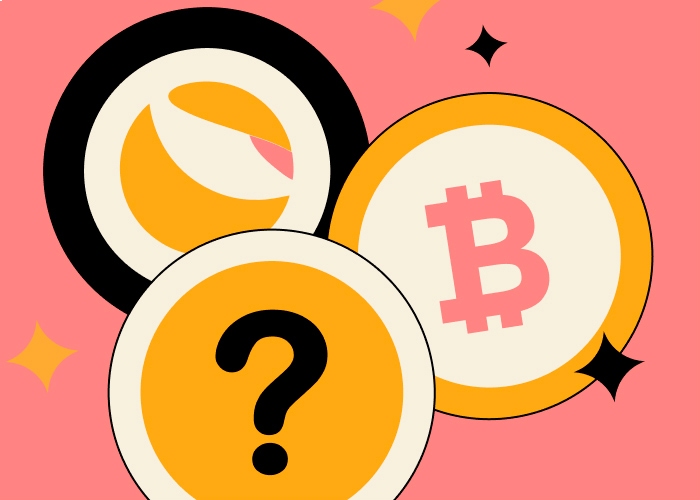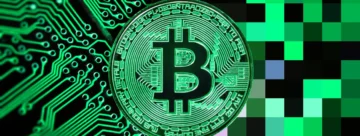LUNA, UST, and BTC: What Is Going On?

On Monday, May 9, the exchange rate of TerraUSD (UST) was “detached” from USD. This attracted close attention of the crypto community and put serious pressure on the token since LUNA underlies the algorithmic pegging of UST to USD. Some experts have reasonably suggested that Terra projects were targeted by a FUD attack. And this seems to be true, but more on that below.
So, UST lost its peg to USD on Monday, though the situation started developing a little bit earlier:
- A serious drawdown of BTC began on May 6 — its price fell by almost $4,000. Recall that in April, the Luna Foundation Guard (LFG) decided to create a reserve fund in BTC to support the UST rate. By the beginning of the crisis, the fund had about 43,000 BTC on its accounts, and just on Friday, another 37,000 BTC were declared for over-the-counter purchase. So, the overall amount of reserves officially was about 80,000 BTC, though other data says it was twice as much.
- On May 7, 11,400 addresses withdrew $1.42 billion in UST from Anchor. This figure rose to $2.2 billion over the next two days. Anchor was the main growth driver of demand for UST and, consequently, of LUNA’s value, thanks to a 20% annual yield. Funds withdrawal hit LUNA’s rate, which by that time had already slowly “crawled” down amid the news about the lowering interest rate on Anchor.
- On May 8, about 285 million UST were dumped onto Curve Finance and Binance. This strongly affected the stablecoin’s rate, putting even more pressure on LUNA. Everything happened while BTC fell, and the LFG and Terraform Labs did not act promptly.
The cumulative effect of these events led to the detachment of the UST exchange rate from the USD amid a sharp fall of LUNA and BTC. On Monday, the LFG announced raising $750 million to stabilize the exchange rate. However, by the time of the fall, LUNA was about 30%, so the security of UST had dropped by a third. The capitalization was then about $13 billion.
The LFG’s measures stabilized the UST for a while, but LUNA’s fall only intensified, dragging the UST with it. And this is against the background of continuing fall of BTC, quotations of which on Tuesday, May 10, dropped below $30,000 for the first time in 10 months. The LFG’s attempts to stabilize the UST rate by selling BTC failed due to this background. The fund drained one of its wallets, but 70,736 BTC, thrown on the market, did not change the situation, provoking the pressure on Bitcoin, its further depreciation, and an inadequate jump in BTC/UST pair. For example, BTC grew first to 42,000 UST on Binance and then exceeded 140,000 UST. As a result, Binance has suspended operations with LUNA and UST. The official reason is the overload of Terra.
Conspiracy and Intentional Speculation for Fall

The version presented below has no factual confirmation, requiring further investigation. And all of the people and companies mentioned have already publicly denied involvement in this story. So here we are, drifting into waters of rumors and speculations, the veracity of which is impossible to prove.
Well, the sequence of events is approximately as follows:
- Blackrock and Citadel borrow 100,000 BTC from Gemini.
- The day before the event, 25,000 BTC are exchanged for UST.
- Do Kwon from the Terra Foundation receives an offer to sell a large amount of BTC for UST over-the-counter.
- The head of Terra agrees and takes out a part of UST liquidity to make the deal.
- After the deal, Blackrock and Citadel dump all the BTC and UST into the market, triggering slippage and cascading forced sales.
- The situation provokes a massive withdrawal of assets from Anchor, entailing a massive sell-off of Luna and violations of UST and USD pegs.
- In parallel, the situation puts pressure on BTC, which is getting cheaper.
- Blackrock and Citadel buy BTC 20-30% cheaper, paying off the debt to Gemini and fixing profits.
There is another version of the same events in which Blackrock, Citadel and Alameda, who have done something similar to Waves, are the main attackers.
- The over-the-counter market generates 1 billion UST and $3 billion worth of BTC.
- An informational FUD attack on UST stability takes place, while $3 billion worth of BTC is thrown onto the market to push down the asset’s price.
- Liquidity is withdrawn from the Curve pool (~$350 million), and mass sales of UST on Binance start, triggering a $1 decoupling.
- The amount of funds that Terra’s algorithmic module can compensate for to maintain the decoupling is limited to $150 million, and it can’t handle the massive UST sales. Detachment is intensifying.
- The TFG starts selling BTC, putting even more pressure on its exchange rate, and the UST drain has continued in parallel.
- As a result, the Terra network is overloaded, the withdrawal of assets from exchanges is stopped, the outflow of funds from the Anchor protocol intensifies.
Recall that these versions can be called conspiracy theories. But they don’t look so unbelievable, so if you have a desire and ability to check them to prove or disprove at least partially — this is a great chance to show yourself 😉
Consequences You Can Already Estimate

As of May 12, 9:00 a.m. (GMT+3), we can state the following numbers:
- The LUNA token has lost almost 99.5% of its value over the past seven days. The capitalization is $755 million.
- At peak moments, the UST stablecoin fell as low as $0.3. The asset is now trading at $0.65. The capitalization is $8.35 billion.
- The Anchor protocol cap decreased to $66 million, and its token ANC lost almost 90% of its value over the last seven days.
- BTC fell by almost 15% over the past 24 hours and is now ~$27,200.
The data is based on CoinMarketCap. The UST price was influenced by Do Kwon’s statement, the main points of which are:
- the community poorly understands how the algorithmic pegging mechanism works;
- the UST oversupply absorption mechanism works, but it doesn’t handle the current imbalance, so all the oversupply will be absorbed, but not immediately;
- the UST peg to the dollar will be restored after the entire mass of surplus supply is absorbed;
- a proposal to increase the base pool for UST burning from 50 million to 100 million SDRs (special drawing rights) and reduce the pool recovery block from 36 to 18, increasing the issuance rate from $293 million to ~$1200 million, is accepted.
The latter would accelerate the UST stabilization process, which, as Do Kwon admits, “is at a high cost to UST and LUNA holders,” but the current crisis is not expected to move to the terminal stage. We will be monitoring the situation as it develops.
Other important consequences of these developments include the following:
- The semi-annual report of the US Federal Reserve Board, released on May 9, focused separate attention on stablecoins. According to Fed officials, in the context of the US financial stability, stablecoins pose many risks, notably debt repayment risk and liquidity risk, which are exacerbated by the high volatility of the assets with which the stablecoins are backed.
- On Tuesday, May 10, Treasury Secretary Janet Yellen testified before Congress at a Senate Banking Committee hearing on the Financial Stability Oversight Council’s annual report. She called for a legal framework to regulate stablecoins. Yellen’s main argument was the TerraUSD (UST), which had depreciated by 30% overnight by the time of her report. The official believes that a law regulating stablecoins should be adopted before the end of 2022.
In addition, the current situation has once again questioned the predominantly decentralized nature of the cryptocurrency industry, and statements by US officials against this background suggest that the trend toward centralization and government regulation of crypto projects will only increase.










